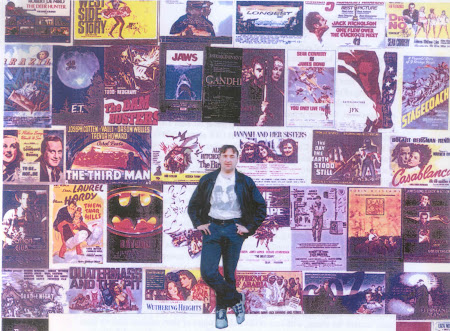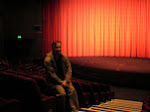School time again, and a chance to reflect on a comedy favourite. This film has slightly been eclipsed in memory by the subsequent series of St. Trinian's comedies, but The Happiest Days of Your Life was the happiest of Launder and Gilliat's school days films.
My first awareness of the film was a retrospective at the Ipswich Film Theatre, where Suffolk-based DJ John Peel was asked about his favourite films, of which The Happiest Days of Your Life was his selection. A good deal of the enjoyment of the film is attributable to the teaming of the two main stars: just listening to them is like witnessing a comedic clash of the titans. The original play by John Dighton was a topical hit, starring Margaret Rutherford in unstoppable form as the headmistress of St. Swithin's, a girls' private school merged inexplicably on the sire of a boys' school. For adapting the play for the cinema, it fell into the hands of Frank Launder and Sidney Gilliat, who wisely chose their favourite comedy leading man opposite Ms. Rutherford: Alastair Sim.Their supporting cast is a model of British character acting, and for once they have a decent script that matches up to their talents: the splendidly cynical and weary looking Richard Wattis as Maths master Billings, his randy sportsmaster colleague Hyde-Brown (Guy Middleton - above), and a gloriously batty, almost silent cameo by Arthur Howard (brother of Leslie) as the aloof science teacher Ramsden, the "ghost of Nutbourne". A requisite romance comes in the form of John Bentley as new English master Richard Tassell, who quickly has eyes for his female counterpart Joyce Harper (Bernadette O'Farrell - soon to become Mrs Launder); appropriately their romance is intertwined with a couple of quotes from Romeo and Juliet. There is also a fleeting hilarious cameo by Sim's 'apprentice' (and future Harry Flashman), George Cole. Best of all among the supporting players comes Joyce Grenfell as the enthusiastic sports mistress Gossage ("call me Sausage!"), who steals practically every scene she is in.
Though released in 1950 at the beginning of that pivotal decade, the date on the film is 1949 - and it belongs in many ways to that era of post-war resettlement, where schools affected by bombing or social reparation had to be relocated (Sim also makes a passing swipe at "nationalising the railways" in the era of the post-war Labour government).
In truth, it's a slight game of two halves, with the splendid ill-matching of boys' and girls' schools making way for farcical contrivances as the two try to convince their two sets of outside visitors that all is well, without revealing the true identity of their cohabitants. As an audience this can be forgiven as Launder and Gilliat are freewheeling downhill having already been delighted for the first part, with the sharpest of British wit and the most hilarious of comedy situations - perhaps British cinema's funniest hour.
.jpg)


.jpg)

































